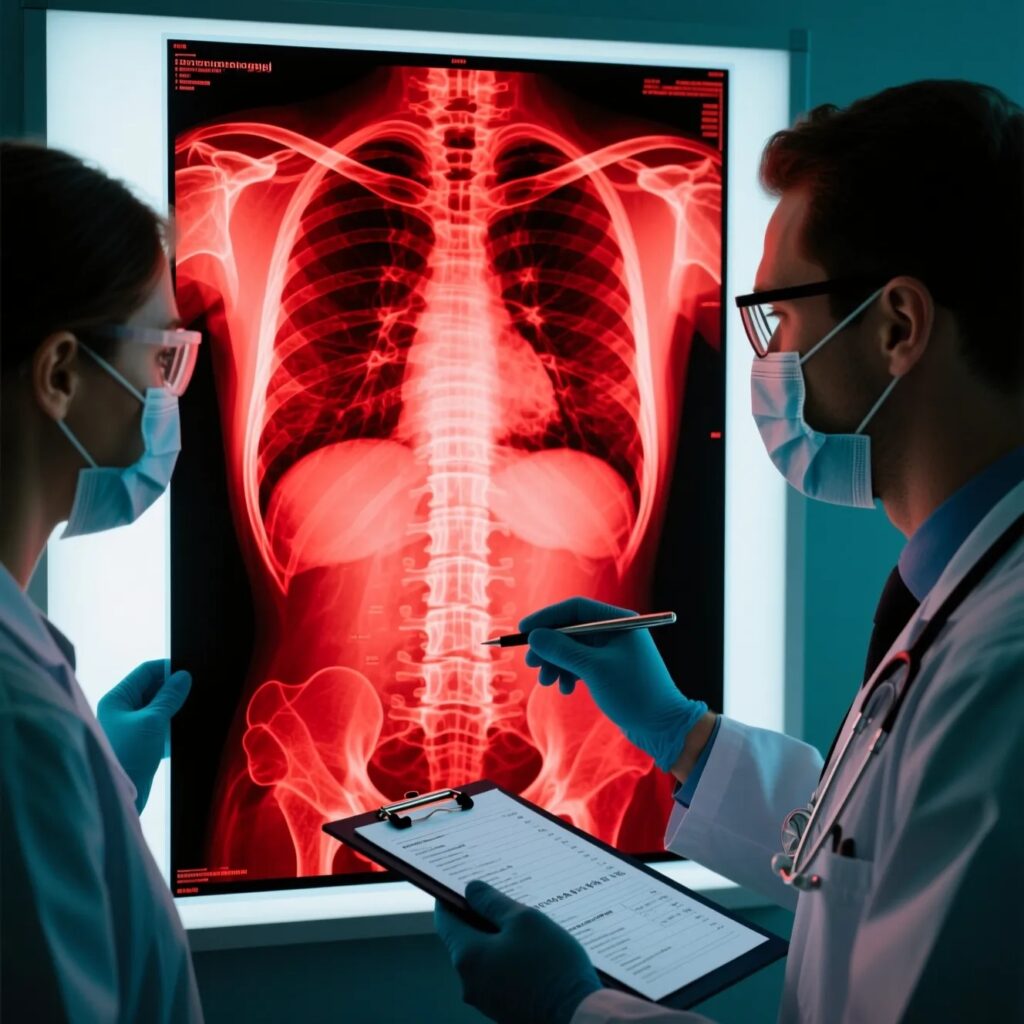Navigating interventional radiology (IR) pain management coding can be complex and challenging. Coders across the nation frequently encounter errors due to the intricate details involved, risking reduced reimbursement and compliance issues. With the 2024 Physician Fee Schedule now finalized and payment cuts on the horizon, maximizing every dollar is essential. IR practices are preparing for a projected 2% reimbursement decrease, making precise pain management coding more crucial than ever. Our case examples provide actionable insights to help coders grasp the nuances, minimize errors, and optimize accurate coding practices that drive insured success into 2024 and beyond.
Sample Cases: Pain Management
CASE 1: ULTRASOUND-GUIDED INJECTION OF THE POSTERIOR KNEE
Indication: Knee pain and calf pain, possible ruptured cyst
Findings: After informed written and verbal consent were obtained including risk, benefits, and alternatives, a timeout was performed identifying patient, procedure, and location. After sterile prep and drape approximately 3 mL of 1% lidocaine was used for local anesthesia. Using ultrasound guidance, a 19-gauge needle was inserted into the posterior fossa and aspiration attempts were made.
The fluid/complex hypoechoic area did not aspirate. 40 mg Kenalog was instilled into the popliteal cyst per physician’s request. The patient tolerated the procedure. There were no immediate complications.
Impression: Successful ultrasound-guided popliteal cyst injection with attempted aspiration (No
fluid was aspirated at the posterior fossa or along the calf.)
CODE ASSIGNMENT AND RATIONALE
20611 Arthrocentesis, aspiration and/or injection, major joint or bursa (e.g., shoulder, hip, knee, subacromial bursa); with ultrasound guidance, with permanent recording and reporting
Ultrasound guidance is included in 20611, so it would be inappropriate to also code 76942. Since the description includes “arthrocentesis, aspiration and/or injection,” this code would account for both the unsuccessful aspiration and the injection of Kenalog.
CASE 2: SYNOVIAL CYST ASPIRATION AND FACET INJECTION
Left L4-L5 facet arthrogram and steroid/anesthetic injection with fluoroscopic guidance and separate left sided paraspinous dorsal synovial cyst aspiration and steroid/anesthetic injection with ultrasound guidance.
Indication: The patient does have left paraspinous mechanical back pain that worsens with twisting his torso. He has some tenderness at the lumbosacral junction on the left. Previous MR imaging has demonstrated enlarging synovial cyst dorsal to the lower lumbar spine. An L5-S1 cyst was described and requested to be aspirated. I reviewed the previous MR imaging. I feel that the dorsal paraspinous synovial cyst at the L5 level is actually clearly from the L4-L5 facet joint and not the L5-S1 facet joint.
I discussed this with the patient and from the beginning we planned to aspirate and inject the left sided dorsal paraspinous cyst but also access and inject if possible, the left L4-L5 facet joint. Ultrasound guided dorsal paraspinous synovial cyst puncture, aspiration and steroid injection: Prior to the procedure, using fluoroscopy to guide the ultrasound, the dorsal paraspinous enlarging cyst at the L5 level which is felt to arise from the L4-L5 facet joint on review of previous imaging was easily identified.
After local anesthesia, a 20-gauge spinal needle was placed into this cyst and 0.5 cc of straw-colored fluid was aspirated. This was sent for cell count, Gram stain and cultures. After the facet injection,
I did inject the cyst with approximately 30% of a mixture of 1 cc 40 mg Kenalog and 1 cc 25% bupivacaine. Fluoroscopically guided left L4-L5 facet joint injection: Review of the imaging previously suggested that the best access to the very degenerative left L4-L5 facet joint was from a caudal approach. With cranial angulation, I was able to isolate the caudal aspect of the joint and with some effort and local anesthesia and fluoroscopic guidance, a 20-gauge spinal needle was directed into the joint. Intra-articular contrast documented intra-articular position. Approximately 70% of a mixture of 1 cc 40 mg Kenalog and 1 cc 25% bupivacaine was injected. After the procedure, the patient was quite happy, he was able to rotate his torso without any discomfort and felt that there was a dramatic improvement of his symptoms with the steroid/anesthetic mixture.
Impression: 1. Successful uncomplicated ultrasound-guided puncture, aspiration and steroid/anesthetic mixture of a dorsal left L5 region synovial cyst which is felt to arise from the left L4-L5 facet joint and not the L5-S1 facet joint. 2. Successful uncomplicated fluoroscopically guided left L4-L5 facet joint arthrogram with injection of a steroid/anesthetic mixture. 3. Apparent substantial positive initial response to the injection which included bupivacaine as well as Kenalog as described above.
Thank you for this referral.
CODE ASSIGNMENTS AND RATIONALE
64999 Unlisted procedure, nervous system
64493 Injection(s), diagnostic or therapeutic agent, paravertebral facet (zygapophyseal) joint (or nerves innervating that joint) with image guidance (fluoroscopy or CT), lumbar or sacral; single level
According to the AMA, aspiration and injection of a lumbar synovial cyst would be reported with code 64999. A guidance code would not be assigned as it would be included in the unlisted code. The facet joint injection is separately coded. Code 64493 includes fluoroscopy, do not also code 77003.
2025 Coming Payment Cuts Mean the Value of Every Reimbursement Dollar is at Stake…
With the payment cuts coming, it’s imperative to make sure your CPT® coding is correct and compliant to recapture full payment and secure every reimbursement dollar opportunity. Master more IR coding topics and break down the complexity with our expert-infused 2024 Pain Management Interventional Radiology Coding webcast on-demand. This webcast is an essential training tool for both audio and visual learners.













